Did you know that choosing the right companion plants for your okra can greatly enhance its growth and protect it from pests? Companion planting is a time-tested gardening technique that can create a thriving garden ecosystem and result in a bountiful okra harvest. By strategically selecting the best companion plants, you can maximize the benefits for your okra and enjoy a productive vegetable garden.
Companion planting is not just about sharing space in the garden; it’s about creating a symbiotic relationship between plants. Certain plants provide natural pest repellents, attract pollinators, improve soil health, and offer shade and protection to their neighboring plants. In this article, I’ll share my top choices for companion plants that work wonders with okra, providing you with a winning combination for a successful garden.
Key Takeaways:
- Companion planting with okra can promote a thriving garden ecosystem.
- Basil can repel pests and protect okra leaves from damage.
- Planting peas between okra seedlings optimizes space and harvest yields.
- Cucumbers and okra share water and soil preferences, making them ideal companions.
- Peppers can help repel cabbage worms and other pests that damage okra plants.
Why Companion Planting is Important for Okra
Companion planting is a beneficial organic gardening method that plays a crucial role in the success of your Okra plants. By strategically selecting compatible vegetables and herbs to grow alongside your Okra, you can create a harmonious garden ecosystem that promotes growth, deters pests, and enhances overall plant health.
Companion gardening involves planting different crops together based on their mutually beneficial relationships. This technique helps control pests, improves soil health, maximizes space utilization, and increases harvest yields.
When it comes to Okra, there are several reasons why companion planting is essential:
1. Pest Control:
Growing vegetables that naturally repel pests near Okra can help protect your plants from common garden invaders. Certain companion plants emit odors or contain compounds that deter pests from attacking Okra. By taking advantage of these natural pest repellents, you can minimize damage to your Okra plants without resorting to harmful chemical pesticides.
Additionally, companion plants can attract beneficial insects that prey on pests, creating a balanced and sustainable garden ecosystem.
2. Soil Improvement:
Companion plants can contribute to soil health by improving its structure, nutrient content, and water retention capabilities. Some plants have deep root systems that help aerate and break up compacted soil, making it easier for Okra roots to penetrate and access nutrients.
Certain companion plants are also nitrogen-fixing, meaning they can convert atmospheric nitrogen into a form that is easily absorbed by plants. This process enriches the soil with nitrogen, an essential nutrient for healthy Okra growth.
3. Plant Growth and Health:
Companion plants can provide shade, wind protection, or support for climbing Okra varieties. By strategically positioning taller plants next to Okra, you can create microclimates that shield your Okra from extreme temperatures or strong winds, preventing stress and ensuring optimal growth.
Furthermore, some companion plants attract pollinators and beneficial insects that help with Okra pollination and overall plant vigor.
Overall, companion planting with Okra offers numerous advantages, promoting the health and productivity of your garden. By carefully selecting a variety of companion plants, you can establish a thriving ecosystem that benefits not only your Okra but also the surrounding vegetables and herbs.
| Benefits of Companion Planting for Okra: |
|---|
| 1. Pest control |
| 2. Soil improvement |
| 3. Plant growth and health |
Now that we understand why companion planting is important for Okra, let’s explore some specific companion plants that work well in harmony with Okra in the upcoming sections. From basil’s natural pest-repelling properties to cucumbers’ shared water and soil preferences, we’ll delve into the world of Okra’s perfect companions.
Basil – A Natural Pest Repellent for Okra
When it comes to finding the perfect companion for your okra plants, look no further than basil. Not only does basil add a burst of flavor to your culinary creations, but it also serves as a natural pest repellent for your okra garden.
The strong scent of basil is highly effective in deterring pests such as aphids, mites, and stink bugs from invading your okra plants. By planting basil near your okra, you create a protective barrier that shields the delicate leaves of your okra plants from these pesky insects. With basil as your okra plant neighbor, you can ensure that your okra remains healthy and pest-free.
Not only does basil act as a pest repellent, but it also benefits from its proximity to okra. The tall and sprawling nature of okra plants provides shade for the basil during hot summer days. This provides an ideal growing environment for basil, allowing it to thrive and flourish alongside your okra.
I always make sure to plant a row of basil right next to my okra. It not only keeps the pests away but also adds a delightful aroma to my garden. Plus, the shade provided by the towering okra plants keeps my basil plants cool and happy in the summer heat.
So, if you’re looking for a natural and effective way to keep pests at bay in your okra garden, consider planting basil. Not only will it act as a powerful deterrent, but it will also provide a delightful aroma and a tasty addition to your kitchen. The symbiotic relationship between basil and okra is a win-win situation for both plants.
| Benefits of Planting Basil with Okra |
|---|
| Acts as a natural pest repellent |
| Creates a protective barrier for okra |
| Provides shade for basil during hot summer days |
| Enhances the aroma of your garden |
| Adds flavor and versatility to your kitchen |
With all these benefits, it’s clear that planting basil alongside okra is a smart gardening choice. So go ahead, give your okra the protective and aromatic companion it deserves!
Peas – Perfect Timing and Space Companions
When it comes to companion plants for okra, peas are an excellent choice. What makes them such great partners for okra? Well, it’s all about timing and space. Let me explain.
One of the key advantages of planting peas alongside okra is that they have different growth timelines. While okra takes its time to spread and develop, peas grow relatively quickly. This difference in growth rates allows you to optimize your garden space effectively.
Here’s how it works:
- Start by planting your okra seedlings.
- Once the okra sprouts are established, you can plant pea sprouts between them.
- As the okra plants begin to spread and take up more space, the peas will have already been harvested.
This planting technique ensures that the peas and okra won’t compete for space or resources. By the time the okra plants need the room to grow, the peas will have already provided a bountiful harvest. Talk about perfect timing!
Maximizing Garden Space and Yield
By pairing peas with okra, you’ll make the most of your precious garden space. It’s a win-win situation for both plants. While okra benefits from the support of the peas during its early growth stages, the peas thrive and become ready for harvest before the okra’s growth becomes overwhelming.
This companion planting technique allows both plants to reach their full potential without impeding each other’s progress. It’s a truly efficient use of resources, making it a favorite strategy among gardeners.
So, if you’re looking to optimize your garden space and enjoy a plentiful harvest of both peas and okra, consider planting them together. The timing and space advantage make peas the perfect companions for your okra plants.
Stay tuned for the next section, where I’ll introduce another fantastic companion for okra: cucumbers.
Cucumbers – Sharing Water and Soil Preferences
Cucumbers and okra make excellent companions in the garden due to their shared love for water and rich soil. By planting them side by side, you can ensure that both plants have similar care requirements and thrive together.
Cucumber vines can provide valuable shade for the soil around the okra plants, helping to prevent weed growth and reduce soil evaporation. This creates a beneficial microclimate for both plants and promotes healthy growth.
In addition to their water and soil preferences, cucumbers and okra can also benefit from each other’s presence in terms of pest control. Cucumber beetles, which are common pests that can damage cucumber plants, are not attracted to okra. By interplanting okra and cucumbers, you can reduce the risk of cucumber beetle infestations and protect your cucumber crop.
Overall, companion planting cucumbers with okra is a win-win situation. Both plants thrive when grown together, sharing resources and supporting each other’s growth. Try this companion planting combination in your garden and enjoy the benefits of a healthy and productive vegetable patch!
Peppers – Natural Repellent for Okra Pests
In my quest to find the best companion plants for okra, I discovered that peppers make fantastic garden companions. Planting pepper plants near okra not only adds flavor to your culinary adventures but also helps repel cabbage worms, which are common pests that can cause damage to the okra plants. The strong scent of peppers acts as a natural deterrent for these worms, keeping your okra plants safe and healthy.
Peppers also work their magic on spider mites, another pest that can wreak havoc on okra plants. The aromatic properties of peppers discourage spider mites, effectively reducing the risk of infestation and keeping your okra crop thriving.
To maximize the benefits of peppers as a natural repellent, you can even create homemade garden sprays using hot peppers and garlic. These sprays can further deter a variety of garden pests and protect your okra plants from potential harm.
Flowers – Attracting Pollinators to Okra
Planting brightly-colored flowers like cosmos, zinnias, and calendula near okra can attract pollinators like bees and butterflies. These pollinators visit the okra flowers as well, increasing pollination rates and resulting in a larger okra harvest. Additionally, the flowers can add beauty to the garden and create a vibrant ecosystem.
When it comes to companion planting with okra, incorporating flowering plants into your garden can have multiple benefits. Not only do these flowers attract essential pollinators, but they also provide a visually stunning addition to your garden space. By strategically planting these flowers near your okra plants, you can create a thriving environment where both plants and pollinators can flourish.
Attracting Pollinators and Increasing Harvests
One of the key advantages of planting flowers near your okra plants is the ability to attract pollinators, such as bees and butterflies. These insects play a crucial role in the pollination process, transferring pollen from the male flower parts to the female flower parts of the okra plant.
Did you know? Okra plants have both male and female flowers on the same plant. In order for successful pollination and fruit set to occur, pollen must be transferred between these flowers.
By attracting pollinators to your garden, the chances of pollination increase significantly. This, in turn, leads to a higher yield and a more abundant harvest of delicious okra pods.
Choosing the Right Flowers
When selecting flowering plants to accompany your okra, it is essential to choose varieties that are attractive to pollinators. Brightly-colored flowers with open shapes and abundant nectar are particularly appealing to bees and butterflies. Some popular options for attracting pollinators to your okra garden include:
- Cosmos
- Zinnias
- Calendula
These flowers not only provide an ample food source for pollinators but also create a visually stunning display in your garden. Their vibrant colors can help to brighten up your okra patch and add a touch of natural beauty to your outdoor space.
Cultivating a Vibrant Ecosystem
Incorporating flowering plants into your okra garden goes beyond attracting pollinators and increasing harvests. These flowers can also contribute to a thriving ecosystem. By providing a habitat and food source for beneficial insects, you are creating a balanced and sustainable environment.
Fun Fact: Some flowers, like the ones mentioned, may also help repel certain pests that can damage okra plants. Their strong scents can act as a natural deterrent, keeping unwanted bugs at bay.
In addition to pollinators, flowering plants can attract other beneficial insects such as ladybugs, lacewings, and predatory wasps. These insects prey on garden pests, helping to naturally control populations without the need for harsh chemicals or pesticides.
The visual appeal of flowers adds not only aesthetic value but also psychological benefits. A garden filled with colorful blooms can lift our spirits and create a sense of serenity and harmony.
So go ahead and plant those beautiful flowers near your okra patch. You’ll experience the joy of watching pollinators visit your garden while reaping the rewards of a successful and flourishing okra harvest.
Melons – Providing Shade and Soil Protection
Melons are excellent companions for growing alongside okra due to their similar growing requirements and preferences. Both melons and okra thrive in full sun and moist, rich soil, making them well-suited to be planted together in the garden.
One benefit of planting melons with okra is the wide, flat leaves of the melon plants. These leaves act as natural mulch when placed around the base of the okra plants, providing shade and protecting the soil from excessive sun exposure. This natural mulch helps to regulate soil temperature and moisture levels, creating an ideal environment for both melons and okra to grow.
Another advantage of pairing melons with okra is the suppression of weed growth. The presence of melon plants helps to crowd out weeds and prevent them from competing with the okra plants for nutrients and water. This, in turn, reduces the amount of time and effort required for weed control in the garden.
The combination of melons and okra not only enhances the functionality of the garden but also offers aesthetic appeal. The sprawling vines of the melon plants intertwine with the tall stems of the okra plants, creating a visually diverse and vibrant garden landscape.
By planting melons alongside okra, gardeners can enjoy the benefits of increased shade, soil protection, and reduced weed competition. This combination is not only practical but also visually stunning, adding variety and interest to the garden.
Lettuce – Shade and Protection for Tender Plants
Okra’s tall stems can provide shade and protection for tender-leaved plants like lettuce. By planting lettuce or other tender greens near okra, you can prevent them from wilting or suffering from heat stress during hot summer days. This companion planting combination ensures that both plants thrive in the garden.
“Planting lettuce near okra can create a microclimate that shields the tender greens from the intense heat of the sun.”
Lettuce is a cool-season crop that prefers mild temperatures and can struggle in the heat. By strategically situating lettuce plants in the shade of taller okra stems, you can provide them with the protection they need to thrive. The okra’s broad leaves cast a gentle shadow over the lettuce, shielding it from direct sunlight and reducing the risk of leaf scorching.
“In return, the lettuce can serve as living mulch, conserving moisture for the okra plants and suppressing weeds.”
Lettuce has shallow roots that spread out and form a dense mat near the soil surface. This mat helps to retain moisture in the soil, reducing water evaporation and benefiting the nearby okra plants. Additionally, the dense lettuce growth acts as a natural weed suppressant, preventing weed competition and allowing the okra to fully utilize available nutrients and resources.
“Utilize different lettuce varieties to maximize the benefits and aesthetics of this companion planting.”
Different lettuce varieties offer a range of colors, textures, and flavors, making them a delightful addition to any garden. Mix and match varieties such as butterhead, romaine, and leaf lettuce to create a visually appealing and diverse garden bed. This not only enhances the aesthetics but also provides a diverse habitat for beneficial insects, further supporting the overall health of your garden.
Companion Planting Guide for Okra and Lettuce
| Companion Plant | Benefit | Companion Planting Tips |
|---|---|---|
| Lettuce | Shade and protection for tender plants, water conservation, weed suppression | Plant lettuce near okra to provide shade and protect it from direct sunlight. Lettuce acts as living mulch, conserving moisture and reducing weed growth. |
| Basil | Natural pest repellent | Plant basil near okra to repel pests like aphids and mites. The strong scent of basil deters insect infestations. |
| Peas | Optimized space utilization | Plant pea sprouts between okra seedlings to make the most of garden space. Peas will be harvested before okra spreads. |
“Companion planting lettuce with okra not only provides practical benefits but also adds visual interest and biodiversity to your garden.”
With the combination of okra’s shade and lettuce’s protection, you can create an ideal environment for both plants. This harmony in the garden contributes to a healthier ecosystem, encouraging beneficial insects, enhancing pollination rates, and fostering overall garden resilience. Try planting lettuce alongside your okra to reap the benefits of this dynamic duo.
Conclusion
Choosing the right companion plants for okra can greatly benefit your vegetable garden. By considering factors like pest control, soil improvement, and pollination, you can create a healthy and thriving garden ecosystem.
Basil, peas, cucumbers, peppers, flowers, melons, lettuce, and other compatible plants are some of the best companion plants for okra. They can enhance the growth of your okra plants, deter pests, attract pollinators, and improve overall garden health.
Experiment with different companion combinations to find what works best for your garden. Whether you’re looking to repel pests, conserve space, or increase pollination rates, companion planting with okra offers a multitude of benefits. So, grab your gardening gloves and get ready to enjoy a successful and bountiful okra harvest!

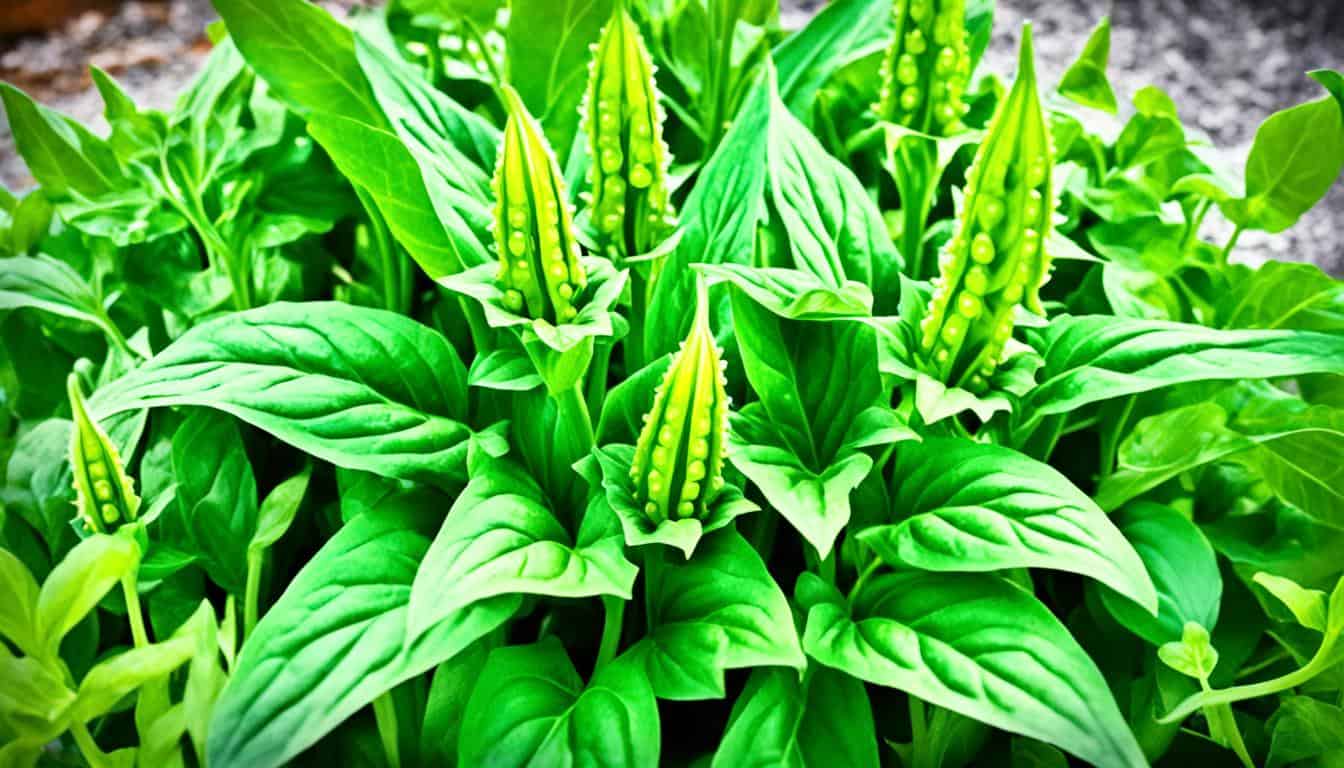
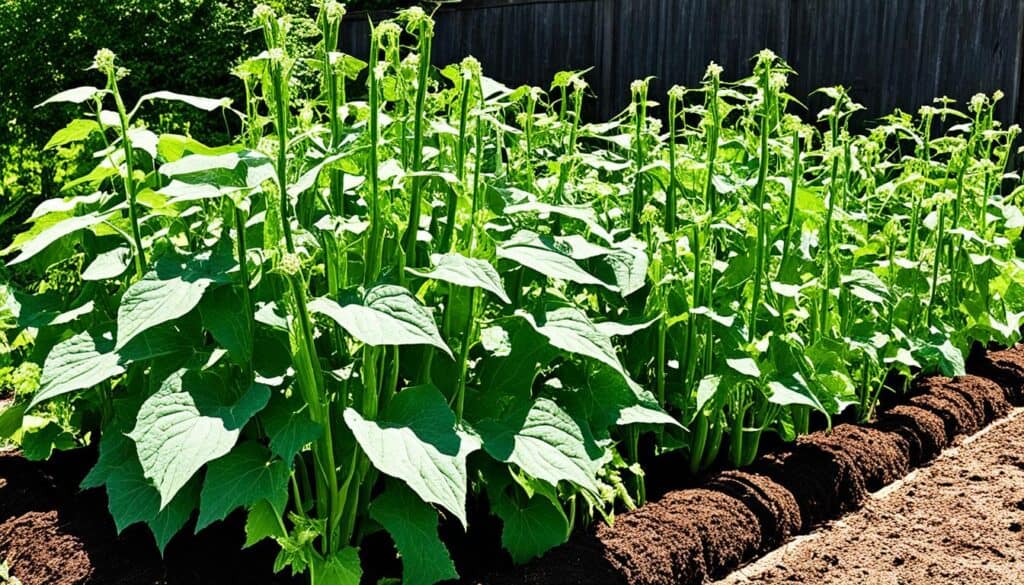
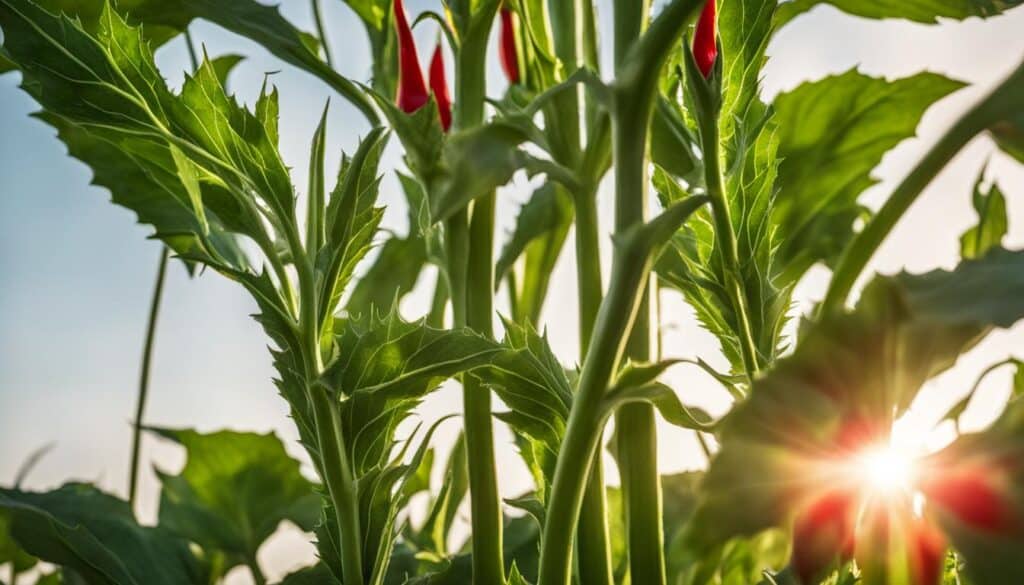
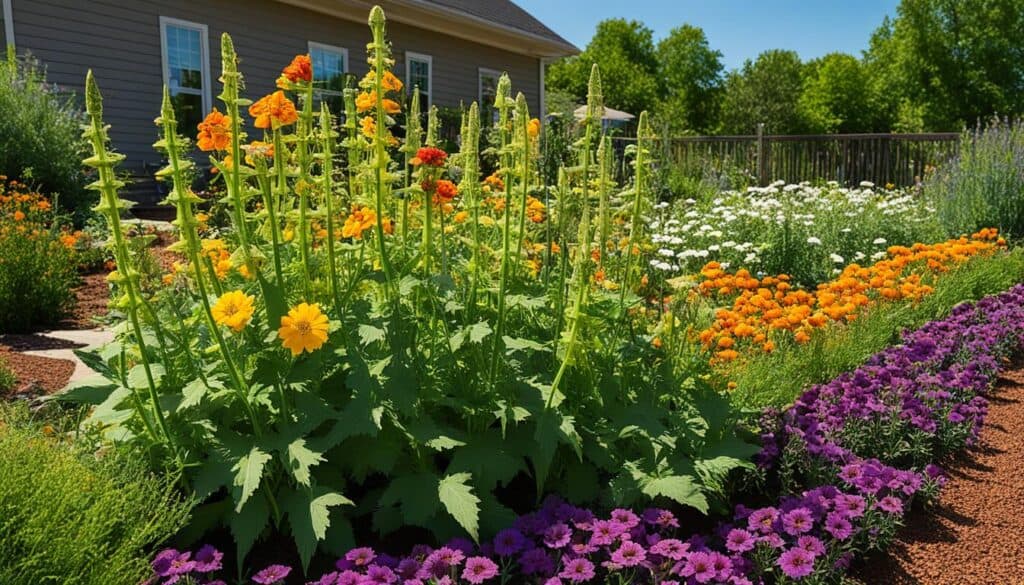
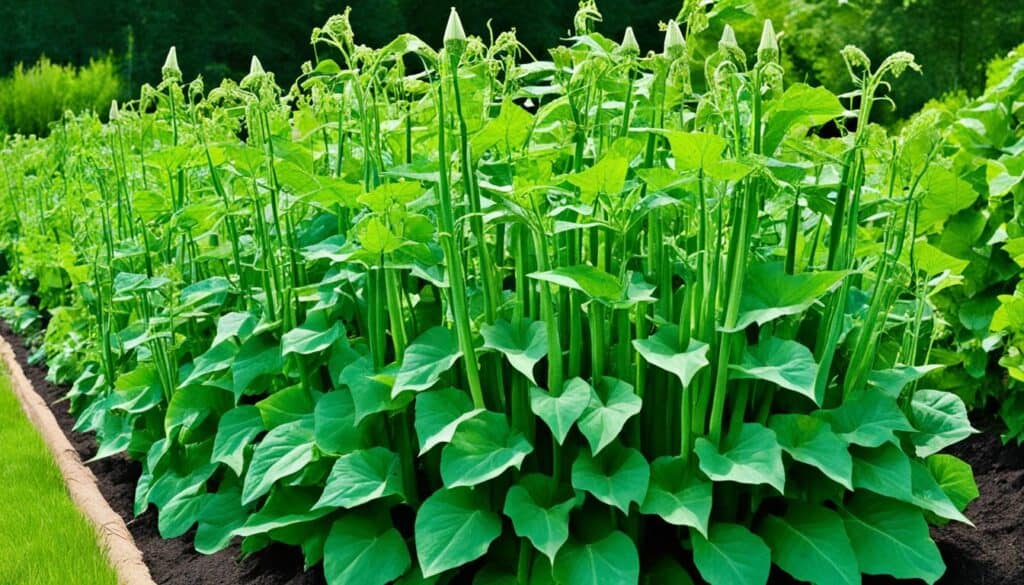




Leave a Reply